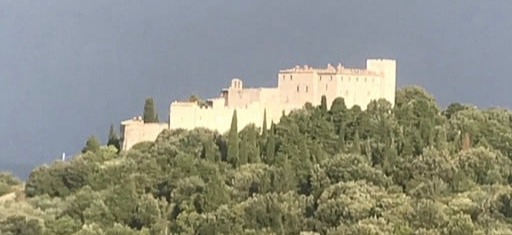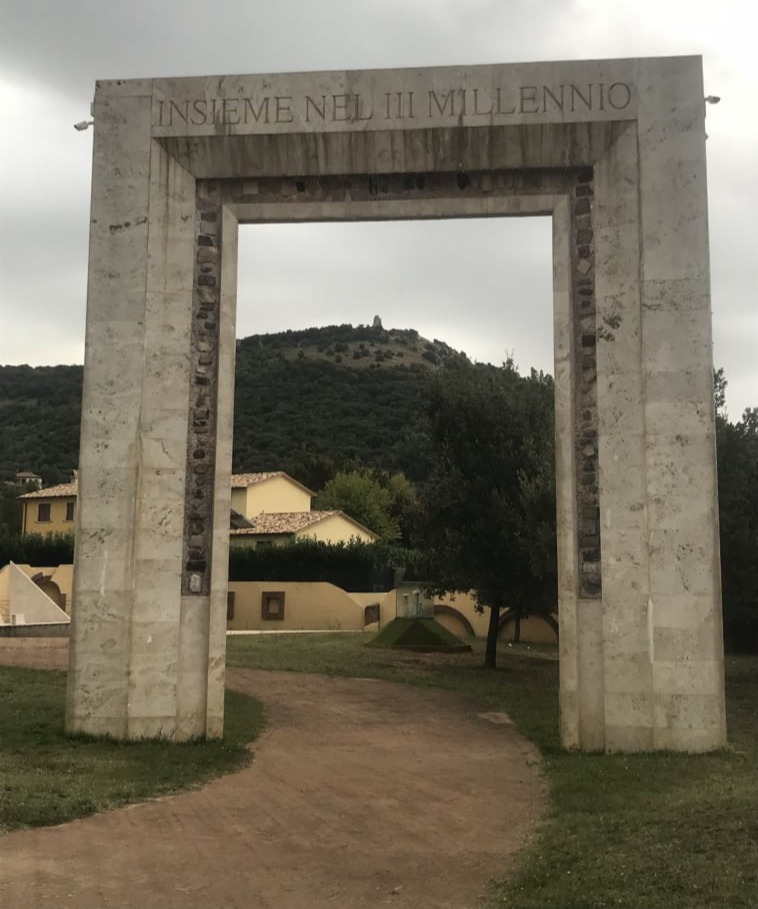
Guardea is a small municipality in the Umbria region of central Italy, nestled between the towns of Terni and Orvieto. Its history stretches from ancient times to the modern day, reflecting the transformation from a medieval hilltop fortress to a peaceful village. This account traces Guardea’s historical development chronologically, highlighting key events, political changes, and cultural landmarks from the Middle Ages through the Renaissance and into the modern era.
Archaeological evidence shows human presence in the Guardea area as far back as the Paleolithic period. Impressive megalithic walls from the 3rd–2nd century BC were built to retain the Tiber River and surrounding streams, indicating a sophisticated knowledge of hydraulics. Traces of Roman settlements also suggest continuity through antiquity.
The town of Guardea emerged during the Middle Ages, around the 11th century. An earlier settlement known as Marruto was gradually abandoned in favor of a more defensible location on a nearby hill. According to tradition, a descendant of the Count of Baschi (from Gascony, France) built a castle on this hill around 1100 to protect the territory. The name Guardea likely derives from the Germanic root “ward” (watch or guard), indicating its strategic function.
The first written mention of the “castrum Guardea” (castle of Guardea) dates to 1154, when a portion of the fortress was sold to Pope Adrian IV.
The medieval stronghold became known as Guardea Vecchia (“Old Guardea”) and featured a large central tower, perimeter walls, and eight defensive turrets. During the 13th century, control of Guardea passed to the noble Alviano family, who ruled over the area and collected taxes. The town served as part of their feudal domain, and its strategic location made it important in regional politics.
During the struggles between Guelphs (papal supporters) and Ghibellines (imperial supporters), the Alviano family aligned with Todi’s Ghibelline faction. In 1367–68, after Todi was conquered by the Papal States, Guardea was briefly absorbed into the Church’s domain before returning to Alviano control.

Guardea reached a cultural and political high point in the 16th century, under the leadership of Bartolomeo d’Alviano, a famous military commander. The fortress may have been enhanced during this time.

Castello del Poggio
In 1581, the Alviano lineage ended in Guardea when Caterina di Alviano married Ludovico di Marsciano, bringing the town and castle into the hands of the Marsciano family. Around the same time, the Renaissance-era Castello del Poggio—a secondary fortified residence built around 1035—was renovated by Antonio da Sangallo the Younger, who added classical architectural elements like porticos and courtyards. The Poggio Castle remains one of the best-preserved medieval residences in Italy.
From the 17th century, residents began moving away from the hilltop fortress to settle in the valley below. Life in the fortress became less practical, and the new site offered more space and access to farmland. In 1684, the Marsciano family officially permitted construction outside the castle walls, marking the birth of the modern village of Guardea.
The town of Guardea began to take shape towards the end of the seventeenth century, a period in which the inhabitants of the Guardea Vecchia castle began to build outside the walls and in the flat area known as Piano Antico. The reasons for seeking refuge within the walls of the old castle no longer existed for practical reasons: the first was that the cultivated land was located below, on the plain at the foot of the hill, the second was that the availability of water was greater in the part below the current town.
Reading a document called Istrumento de Concordia from the year 1684, we know that the counts gave the population of the Guardea Vecchia castle the opportunity to build outside the castle walls, that area it seems that a slow abandonment of the village had already begun at the beginning of the seventeenth century.
At the beginning of the 18th century, only 8 families remained, out of the more than 60 in the 16th century. The exodus ended in 1707, when the parish priest Don Giuseppe Lorenzo Canale carried the Blessed Sacrament in procession to the small church of Sant'Egidio. The new parish church was ready years later, in 1732, thanks to donations and the voluntary work of the villagers, and was consecrated in 1736.
The descent into the valley
It was not without consequences, unfortunately the building materials for the new town were transported down into the valley from the old castle dwellings. Furthermore, the original church was abandoned during the construction of the new church downstream. From the correspondence documents of the parish priest Don Lorenzo Canale, it appears that the state in which the old parish found itself was a very sad one. The church doors had been bricked up to keep out animals. However, a small group of shepherds, defined by the parish priest as "impudent and unruly youth", broke through the wall. The animals thus grazed freely in the church, the pigs rummaged among the bones of the poor deceased. In the meantime, all the good building materials were taken down to the valley, and while the new houses were being built, the old castle fell into disrepair.
A new parish church, Santi Pietro e Cesareo, was built in the early 18th century on the central square. It became the religious and social heart of the new town.

Chiesa Santi Pietro e Cesareo
The Guardea church located on the town square opposite the town hall.
Today, Guardea has about 1,700 residents. Its economy is based on agriculture, olive oil and wine production, and increasingly, tourism. The town is part of the Alviano Nature Reserve, a protected area rich in biodiversity and popular among birdwatchers and hikers.
Historical landmarks such as Guardea Vecchia (now ruins), Castello del Poggio (privately owned), and churches like Santi Pietro e Cesareo continue to define the town’s landscape.
In 2001, Guardea unveiled the “Arco della Coscienza Planetaria” (“Arch of Planetary Consciousness”), a symbolic monument made from stones contributed by cities around the world. It reflects Guardea’s commitment to global peace and cultural dialogue.

Arch of Planetary Consciousness
Found in the park on Via del Giuoco in Guardea.
For centuries, Guardea was part of the Papal States. The Marsciano family retained their feudal titles, but the region was governed under Church law. In 1860, following Italian unification, Guardea was annexed into the Kingdom of Italy, ending papal rule and feudal structures.
In the early 20th century, Castello del Poggio came into the hands of Jimmy Savo, an American entertainer, through marriage to Lina Farina. They turned the castle into a cultural hub, hosting artists and intellectuals—including the Nobel Prize-winning author John Steinbeck.
Guardea remained a rural town, largely untouched by World War II, and it preserved its agricultural traditions. The lack of industrial development helped maintain its natural environment.